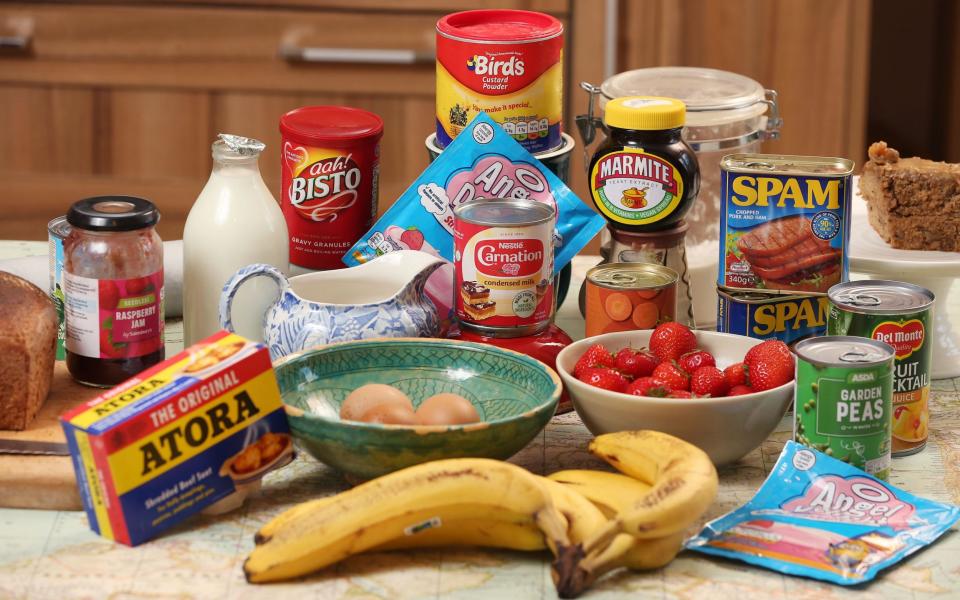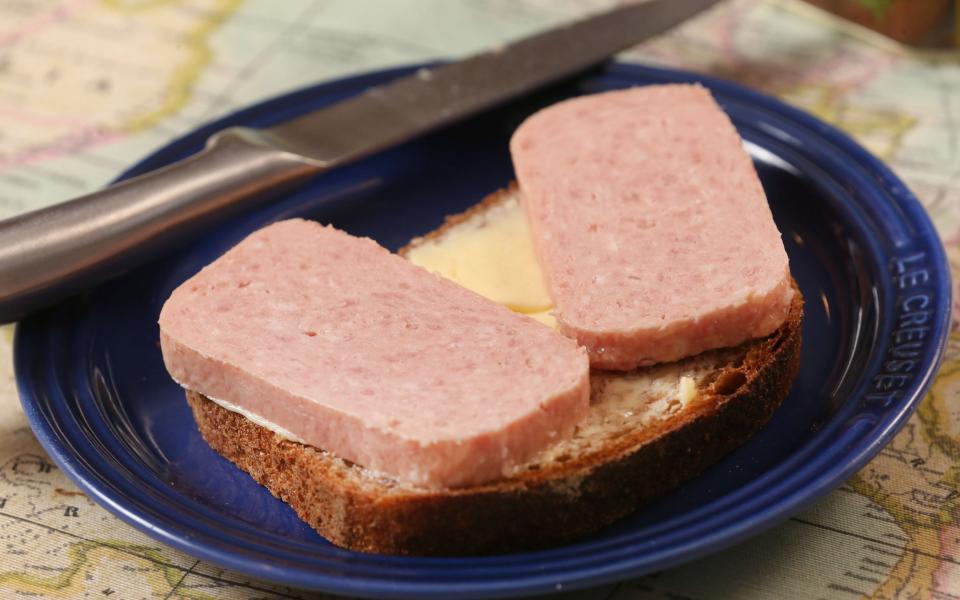It’s one of the hottest days of the year so far, but my oven is on and blaring. There’s a roast beef inside, and a tray of roast potatoes sizzling inside. My Yorkshire pudding is ready; there’s a pot of rice pudding boiling on the hob, with a couple of tins of peas and carrots next to it, ready to be heated up.
It’s a bit counter-cultural, given the rising temperatures, but so was my last week. I spent seven days pretending it was the 1960s — roast beef, tinned vegetables and all — to see what health benefits it might have. And while there are some things I definitely won’t continue in my 21st-century life (the lack of fresh vegetables and toast at almost every meal), there are other habits I will definitely continue.
They were clearly doing something right. In the 1960s, just 1% of men and 2% of women in the UK were classed as obese, whereas today 25.2% of men and 26% of women are classed as obese.
In the late 1950s, the average man weighed 10 stone (65 kg) and the average woman weighed 8 stone 6 lbs (55 kg). By 2021, the average man and woman reported weighing 13 stone 4 lbs (85.1 kg) and 11 stone 3 lbs (71.8 kg) respectively.

Although there is still a huge gap between rich and poor households, as social historian Prof. John Burnett noted in his groundbreaking study, the 1960s Abundance and Need: A Social History of Food in England from 1815 to the Present. The “prosperity years” – post-war rationing – were becoming a distant memory and the recession of the 1970s had yet to take its toll.
Overall, the majority of working people were reasonably well-nourished: in the 1960s Britons were drinking more milk a week – an average of 4.84 pints per person – spreading more butter on toast, eating more eggs, consuming much more sugar and eating more meat than their peers in 1950 or 1974. Their intake of fresh fruit and green vegetables was also higher, but they ate fewer fresh vegetables overall. After all, this was the beginning of the age of ready-made foods and tin cans.
Meat and two vegetables and family meal times
As a middle-class professional household, with my husband out to work every day and me taking care of the housework, my family ate three main meals a day: breakfast, lunch and dinner, plus a light snack at 11am and again at 4pm. Some households also had ‘supper’ before bed – again a light dinner. “Snacking didn’t happen like it does now, but especially as a woman in the 1960s, you could sit up in the middle of the morning,” says food historian Dr. Annie Gray. Call the Midwife CookbookIt revolves around recipes from the 1960s. Meanwhile, for my husband in the office, “this is still the era when the tea trolley came twice a day.”


But the biggest difference between then and now is, first, the types of food people ate, and second, how much of it they ate. While sugar consumption was much higher back then (an average of 17.76 oz or 503 g per person per week, compared to 1.8 kg per person per year today), there was very little processed food. Canned foods, yes, UPFs, definitely not. And that decade saw the rise in popularity of breakfast cereals (Coco Pops was introduced in 1961 and Ready Brek in 1957), the emergence of more adventurous cereal flavors that tickled the palate (Golden Wonder introduced Ready Salted in 1960 and Cheese & Onion in 1962), and Angel Delight was invented in 1967, the truth is that these were exotic treats to be eaten occasionally.
Today, we get 57 percent of our calories from ultra-processed foods. In the 1960s, that number was almost zero.
Bread and butter, potato and beef fat pudding
Most meals were fairly simple, consisting of meat and two vegetables, cooked from scratch. Cheap, filling starchy carbohydrates – potatoes, bread, beef pudding – were the staples of every menu; meat was mostly red (chicken was an expensive luxury) or processed (sausages, ham and Spam), and leftovers were not called that, just for the next meal; at least in few British homes, especially in the early 1960s, were refrigerators.


Even in 1968, only 50 percent of households had one. Vegetables came in cans or were things you grew or could buy at the grocery store: peas, carrots, cabbage, squash (not pumpkin). “Broccoli wasn’t invented,” my 77-year-old father said. There was always pudding – usually some kind of something and custard – but it came at the end of the main meal; my mother remembers being allowed to have pound cake at teatime during the week, but only after a slice of bread and butter.
Portion sizes were smaller, too; the average plate size was 9 inches (23 centimeters) and bowls were a modest 7 inches in diameter. In contrast, the average size of most of our modern-day foods is American Journal of Public Healthmagazine Nutrition And Journal of the American Medical AssociationA portion of meat would be about 100g, and the lion’s share would go to the man of the house, with even less for a wife like me – 1.5kg of beef was enough for three meals for our family of four.
And people were much less sedentary back then: as a housewife, I would be on my feet most of the day shopping, cooking or cleaning, and I would travel by foot or bus rather than by car. In 1967, more than three-quarters of adults (77%) said they walked for at least half an hour every day, compared with just 42% in 2010.
What happened when I tried the 1960s diet?
My eating week in the 1960s was up and down. I started Sunday with a cooked breakfast, albeit a modest one: a slice of bacon, a piece of toast (fried in beef fat) and a cup of tea. The main event, of course, was the Sunday roast for lunch, and despite my relatively modest portion, I was too full to eat more than a few slices of bread and jam for dinner, which would have been quite common in the Sixties.


Monday was leftovers: a few roast potatoes, some vegetables and gravy, plus a slice of bread and butter for lunch; cold roast beef and baked potatoes with salad for dinner, colored with a can of peaches and chopped bananas, topped with condensed milk for pudding; on Tuesday I turned the remaining beef into some beef for sandwiches.
In the Sixties I would have probably cooked the main meal for lunch when my husband and children got home, but during my practicality exam week I reversed this: most days breakfast would be boiled eggs or toast with butter and Marmite. Lunch would be leftovers from the night before, perhaps a bit of bread and butter to enhance it. Dinner, which we all had together around 6pm, was the main meal, whether it was spaghetti squash on toast (Heinz was very popular in the Sixties) or macaroni rolls with jam and custard; potato and onion pie, followed by rice pudding or toad in the hole, leftover tinned peas and tinned fruit cocktail and custard for dessert.


There were a few treats: a (medium) coffee and walnut layer cake for my dad’s birthday (made from a Sixties recipe, no Camp Coffee flavour, so I had to improvise with Nescafé) and fish and chips on Friday, which is available at most homes, but no more mid-morning latte from a coffee shop or glass of wine with dinner.
The experience surprised me at first. I don’t normally eat breakfast but I found that having some toast or eggs kept me from being so hungry at lunch and that I was happy with my small portion. I had never thought that three cold fried potatoes and a handful of tinned peas soaked in Bisto could be considered a filling lunch.
I found myself less hungry in the afternoon. By early evening I was ready for dinner but not starving – and even on a ‘hearty’ day I was perfectly happy eating just a sausage and a small portion of mash (I’d get out a decent-sized old plate to keep my portion sizes reasonable) – and pudding always rounded things off nicely at the end. Even the scales showed I’d lost a pound and a bit, which seemed remarkable considering the amount of carbs I’d been consuming.


But by day five, I had hit a bit of a wall: I was feeling increasingly groggy in the morning, my breath was terrible, and I was craving salad and lean protein. “My biggest criticism of the diet is the lack of fresh fruit and vegetables, which are so important for good nutrition and gut health,” she says. TelegramMy expert nutritionist Sam Rice reviews my weekly menu.
“There’s very little variety in terms of plant foods, and nowhere near the modern recommendation of eating 30 different plant foods a week. There’s also very little in terms of complex carbohydrates, again from fruit and vegetables, whole grains, beans, lentils, nuts and seeds.” Rice also points out the lack of omega-3s from oily fish, and that most of the fat I eat is saturated animal fat, rather than the healthier monounsaturated fats found in olive oil, avocados and nuts.
At the end of the week I would have been absolutely delighted to never see another slice of bread dripping with bread and I am sick of the sight of jam. It turns out that the weight I thought I had lost has come back, albeit a little less.
But there are some things I would take away. Smaller portions for a start – I’ll stick to my Sixties dinner plate. Nescafé with milk from the carton is a perfectly respectable (and much cheaper) alternative to a high-calorie latte for the day, and a glass of wine is a better treat now and then (I won’t be switching to sherry). My children will be happy to continue their daily pudding ritual too.
But I am so glad I have a fridge and access to a wide range of fresh fruit and vegetables. And Spam will never have a place in my kitchen cupboard.